A former Celebration member believes deliverance - the Pentecostal equivalent of exorcism - has been used to replace counselling, medical care, and even law enforcement at the controversial church. Others say the experience of having a demon 'cast out' made them physically ill or left them psychologically damaged.
Sam Olley, Reporter
@OlleySamantha Samantha.Olley@rnz.co.nz
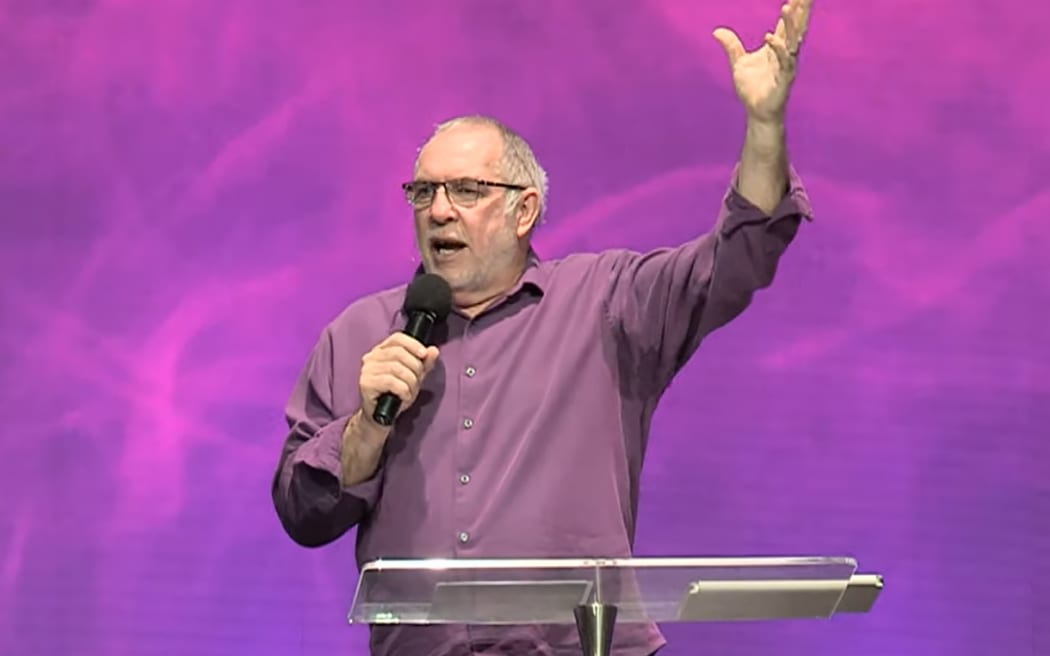
Celebration pastor Murray Watkinson says he has always thrived on a little bit of opposition.
She remembers him telling the congregation there was a demon inside her. That her cheeks burned red as he shouted in tongues into the microphone, speakers booming his voice to hundreds of followers in the auditorium. Beneath the stage lights, his spit spattered her face.
Megan* has uncomfortable memories of him grabbing her head tightly and ordering the demon to "be gone". Church leaders circled her, with raised hands, praying for the crying, shaking girl to be 'saved'. She felt hot and dizzy. She was eight.
Megan, now an adult, says it was Celebration Centre Church pastor Murray Watkinson who performed the deliverance: a Pentecostal equivalent of exorcism.
She describes the process as "emotional torture" and says it left her ashamed and shell-shocked. She spent the rest of her childhood wondering if the demon still clung to her.
Megan is one of numerous former Celebration members who independently contacted RNZ to claim deliverance left them psychologically damaged - the latest in a series of allegations levelled at the church, based in eastern Christchurch.
In recent months, ex-members have called it "toxic", "hurtful" and "extreme". They claim they were manipulated and exploited. Some say they gave dozens of hours of unpaid work and hundreds of dollars in monthly tithes for years - all to support the church trusts and businesses (including childcare centres and a cafe), and all exempt from tax in New Zealand under the Charities Act.
'A toxic environment': Former Celebration Church members felt exploited
One former member says he and his wife gave 12,500 hours over seven years. Another says they cannot afford a house because they tithed their savings.
Even as Arise and Gloriavale churches face a swathe of negative publicity, Charities Services says it has received more complaints about Celebration than any other charity in the past five years.
Megan's voice still wavers when she speaks about deliverance at Celebration. She is infuriated when she sees the church's social media posts encouraging youth to join.
She has "pretty screwed-up" recollections of congregation leaders telling her to convert her entire family to Christianity or they would "burn in hell".
"It was absolutely terrifying. I would just have nightmares about that, I remember just going into intense panic. To put an eight-year-old through that, it was horrific."
She says Celebration members called her non-Christian mother a "witch".
"It was dark and f*****d up."
'Hocus pocus'
When Russell Kirkpatrick attended Celebration it smelled of astringent chemicals. Pastor Murray Watkinson set up the place-of-worship in remodelled buildings at a former chemical factory site in Wainoni, during the late Eighties and early Nineties. Kirkpatrick considered the buildings "brutalist but efficient".
He was Watkinson's second-in-command, but he believes Watkinson steered the evangelical assembly further and further towards Pentecostalism. Kirkpatrick became dismayed by what he saw as "ludicrous extremes" and "hocus pocus".
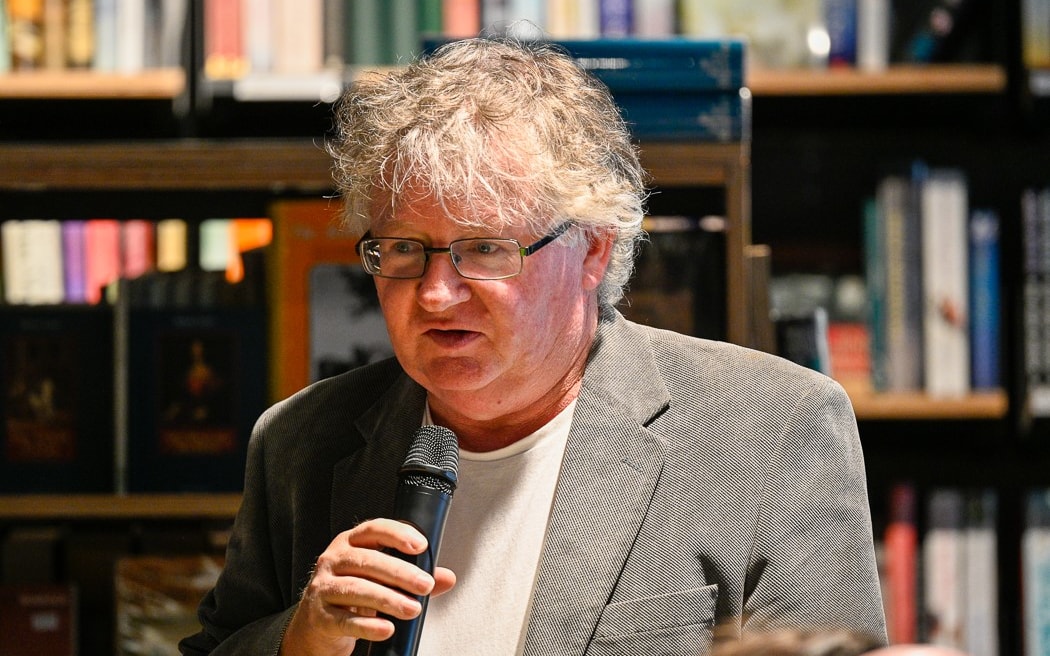
Russell Kirkpatrick has felt intense regret over his involvement with Celebration Church Photo: Cat Sparks
He is now talking over Zoom from Canberra, where these days he's an award-winning fantasy author, a "radical leftie" and a geography lecturer, with office walls covered in maps and an email address containing the term 'mapboy'. He adjusts his position in his chair and pauses.
"I've been waiting for this for 25 years. I knew eventually this was all going to come to people's attention."
Inside the former factory, deliverance began to happen regularly, and Kirkpatrick was increasingly worried. People's private struggles became public in church.
Those undergoing deliverance, at the altar, were commonly told they had a spirit of abortion, or homosexuality, in front of the congregation, he says. Sometimes those people had secretly had abortions or same-sex relationships, but other times they were random accusations that fellow churchgoers had relayed to pastor Watkinson.
Kirkpatrick believes, for some, the rituals replaced counselling, medical care, and even law enforcement.
Women who had been beaten were told to deal with it in-house, with deliverance, and not go to the police, he claims. People bereaved by sudden, traumatic death were told the church's cleansing - rather than grief counselling - would ease their pain.
Kirkpatrick recalls preaching that told vulnerable churchgoers that problems like mental illness and sexual violence came from an external force - "some sort of demon that's attracted that behaviour to you, and so you're the one that needs deliverance". He felt repulsed.
He believes the motives were sometimes racist; for example, he claims Watkinson told churchgoers Māori who expressed whētero (protruding the tongue) allowed evil spirits to enter their mouth.
Other times, he believes, the motives were misogynistic.
He alleges Watkinson confided that "a woman he [Watkinson] counselled who made him feel sexually aroused, [and] that was her fault, not his, because she had a spirit, a spirit of lust".
His answer to that?
"She needed deliverance."
Kirkpatrick felt the practice was also an "insidious" means to silence female abuse victims.
On more than one occasion, he says, when a man confessed to abusing his wife, the woman's "obedience" was questioned and she was pressured into deliverance. He saw it as "a way of the church avoiding having to actually deal with anybody's issues. It's awful. It's horrific".
He eventually left but wishes he had done so earlier. Now 61, he has felt deep, intense regret for decades.
"Their [Celebration followers'] lives, are, basically f*****d up by this kind of teaching. And I'm incredibly sorry that I wasn't together enough myself, to be able to give people a hand."
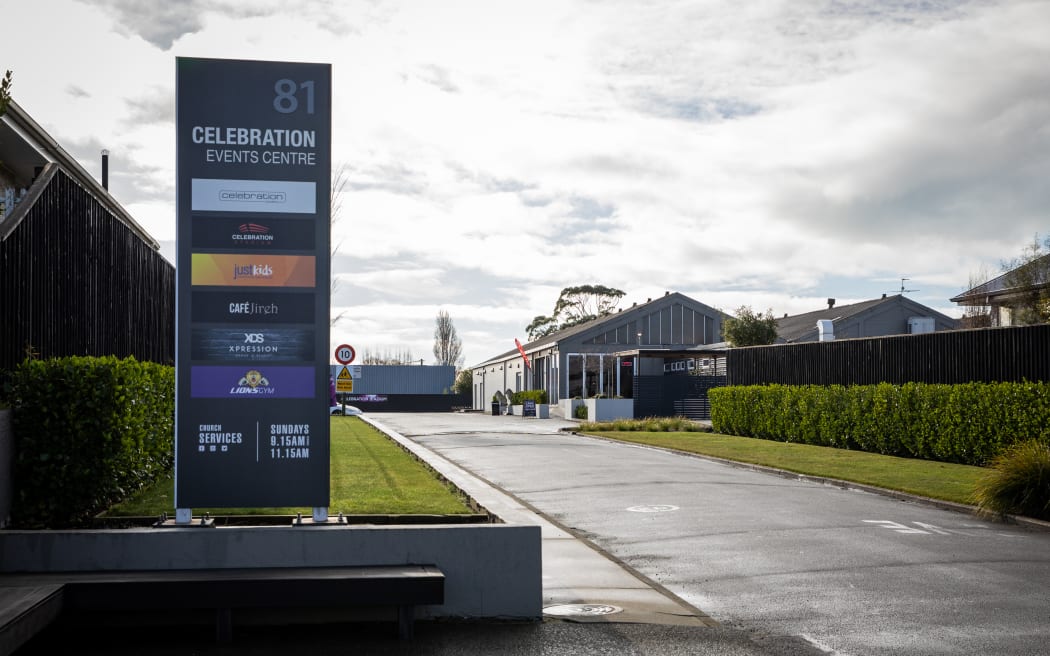
Murray Watkinson says Celebration is getting 'special attention' from the media because it is a 'special church'
Kirkpatrick understands why Celebration parishioners become so dedicated to the church and the intense worship, because he's been there. He says he dove deeply into conservative Christianity as a teen, dazed by a difficult relationship with his father and yearning for unconditional love.
"That's what I felt the church gave me; God was going to love me no matter what."
When Kirkpatrick went through deliverance, the "oppressive" drama made him feel deeply uncomfortable, especially when he was "Slain in the Spirit".
He thought it was a "sham".
"When the preacher of power lays their hands on you, you're supposed to fall over, you're knocked over by the power of the Holy Spirit. Well, of course, if you don't, then you're considered to be in rebellion."
He cringed when church members spoke in tongues. He thought it had "no purpose other than to psychologically bind you to the church because you were doing something crazy."
People wail and collapse
It has been 25 years since Kirkpatrick left Celebration, but videos of services posted online recently, show the church continues to practice 'deliverance ministry' en masse, in 'altar calls'.
Each time, preachers walk down from a violet and pale blue stage to a crowd, speaking a combination of tongues and English, raising their voices and quickening their speech as they push down vigourously on attendees' heads and necks one by one.
People wail and collapse on each other. Some convulse and scream.
In May, the self-described Hastings-based 'apostle' Mike Connell, led deliverance at a Celebration family service in Christchurch. With Murray Watkinson by his side, he shouted "demons will flush out", rocking and chopping his hand from his chest to his legs for emphasis.
He leaned on the altar and told the congregation, "The thing that people that don't know is [sic] when you stand up in a leadership role in the Holy Ghosts' church is the level of Jezebelic witchcraft and warfare that comes against you."
He alternated between New Zealand and American accents, and declared, with his right hand in the air, "a breaking of all witchcraft assignments".
On Connell's website, under a photo of him wearing dark aviator sunglasses, is a blurb stating he "sets people free from an orphan mindset".
He claims to have "seen many thousands of people trained and equipped to move in the Spirit and minister healing and deliverance".
Connell's approach was less radical than that of Celebration's Rarotongan-based pastor Jonathan Cargill, who has also led deliverance in Ōtautahi.
In a Celebration conference last year he ordered churchgoers to "get a cough going" so he could "command the spirit powers to come out".
"We are going to dislodge some stuff," he added, bending over to demonstrate. "We are going to clean up a bit of a mess and we are going to drive [out] the demonic."
"I take authority over rebellion, in Jesus' name and over immorality. I take authority over every homosexual spirit, in the name of Jesus Christ, I take authority of every unclean demon."
Cargill then scanned the room and called for "spirits of abortion get off". Murray Watkinson paced in the background.
Attendees were stooped, rocking, their chests tensed and jolted. Their shoulders rose and fell as they pushed out coughs.
Cargill pushed their heads down. He pointed at random faces shouting "Ooshakalaba out you come". Some people shrieked back.
Cargill continued to shout through the microphone.
"Get out your homosexual spirit. Lose your hold lesbian spirit, out you get, in Jesus Christ's name. Immortality, vileness, filth: Go."
He continued for 40 minutes.
Sarah* was there for that altar call. It left her physically ill. It was the combination of prolonged pressure on her forehead, the emotional upset and the coughing.
"I've actually got to the point where I vomited. You're like screaming on the floor. You've just got yourself into such a state."
She claims others would throw up too. She recalls some Celebration parishioners talking in strange voices that scared her and that some flailed about "literally gnashing" and had to be physically restrained.
She says she first underwent deliverance as a devoted 18-year-old completing a weekend-long youth camp at Springbank, near Cust. She recounts days spent with dozens of young Christians, doing activities such as listing their sins and nailing them to a cross, followed by evenings of deliverance.
"It would be very, very weird, if you didn't [undergo deliverance]. They would come and find you in the seats, if you still stood on the seats and didn't come to the front," Sarah says.
But deliverance didn't make her feel healed, or pure-instead she felt "broken" and "crushed" by the shaming and hysteria in a large group. Sometimes her self-esteem dropped so low she took the next day off work.
She was most upset by churchgoers' private struggles being made public during deliverance. Sarah claims Wilkinson would reveal churchgoers' abortions, or gang connections, domestic violence, miscarriage and adoptions when speaking through his microphone, attempting to rid their 'demonic' troubles.
Sarah also couldn't stand it when people were singled out and, as she saw it, "coerced".
She says a man in a wheelchair, who was recovering from heart surgery, was told to walk onstage for 'healing' in front of the packed auditorium. He tried but was too weak. The furore of mass prayer and excitement awkwardly died away.
The pressure on him was "not good".
"He was so sick he just couldn't [walk]; the fact that he'd even got to church was a miracle in itself, but then you've got every single person staring at you and you're meant to have this 'faith' and he just literally couldn't do it. It was awful."
Eventually, Sarah left Celebration in her late 20s. She kept her Christian faith but not her friends, who she says, shunned her.
One of the first things Sarah did was get counselling, something she says church leaders had "actively discouraged" before her departure
She had relied on deliverance to remedy childhood trauma, but the depression and anxiety kept coming back.
In fact, the deliverance she underwent and witnessed at Celebration had created new "traumatising" and "horrendous" memories for which she also needed counselling.
'Good judgement goes out the door'
Peter Lineham MNZM finds it "very seriously troubling" to hear stories like these, but the Emeritus Professor of religious history at Massey University says it's not the first he's heard of problems at Celebration Centre Church.
"I have known people who've walked away from that church on exactly the same grounds; that they were troubled by its complete pastoral failure, and by its treating of everything as demonic and dramatic."
But he believes "churches like the Celebration Centre-which are created by their own pastors as a kind of private venture-don't really have a good structure of accountability".
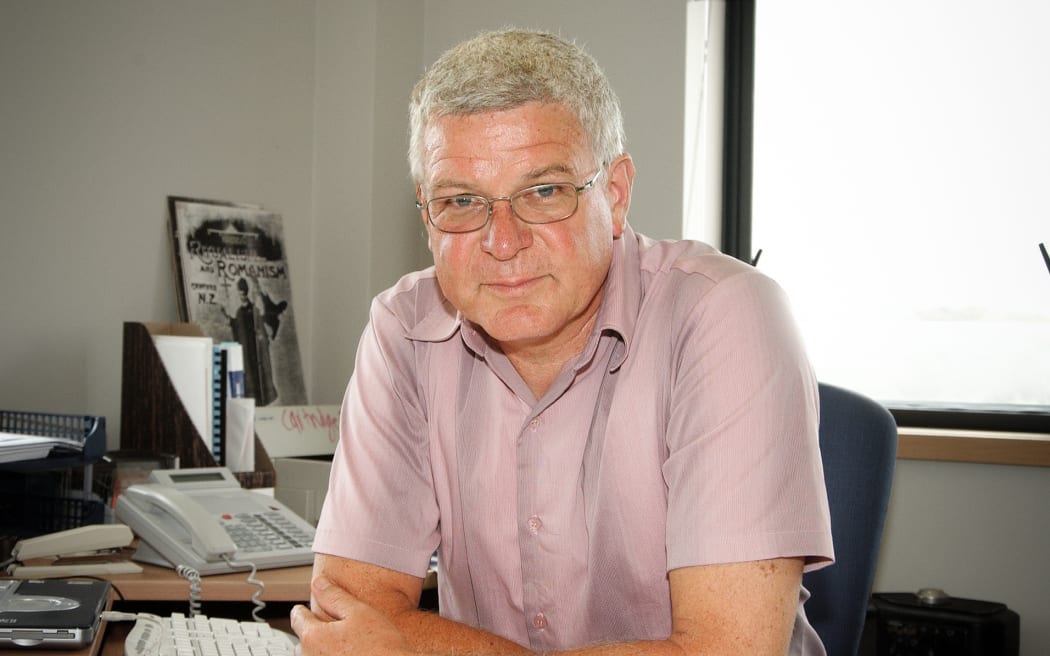
Peter Lineham is concerned there may be an 'extreme' disregard for informed consent at Celebration
Celebration's website says there are members in Nelson, Warkworth and Kaikohe, as well as overseas in Rarotonga, Los Angeles, San Fransisco and parts of Asia and Africa The church describes itself as evangelical.
But deliverance is strongly associated with Pentecostalists, who, Lineham says, believe demons are constantly attacking humanity and they [demons] must be named and cast out to set people free from sin.
This casting out, called deliverance, is considered a form of Christian exorcism by many religious academics, including Lineham. Others say the practices are similar but ultimately different.
Exorcisms in Anglican and Catholic churches are normally ancient, private, carefully-protected rituals, Lineham says.
"Catholics and Anglicans would be extraordinarily cautious about conducting an exorcism; they would need to be assured that all aspects of mental health and of other physical ailments had been thoroughly explored before giving permission. And it would probably need the permission of the bishop before it went ahead."
But just like Catholic and Anglican exorcisms, Pentecostal deliverance calls on "the power of Christ to remove the occupation of the devil from the person".
Lineham is concerned that at Celebration there may be an "extreme" disregard for informed consent. That amid the congregational excitement, noise and enthusiasm during deliverance, "good judgement goes out the door in a second and the extremist voices carry the pack".
He says the accusations and shaming during deliverance in services can be "outrageous," "deeply shocking" and "not unlike the old witch trials of the 16th century".
"I'm really disturbed that a crowd of people think they have the right to determine the wellbeing of a person when they don't even sometimes know the person's name. And they actually abuse the lack of consent the person has."
Can exorcism, and more specifically, deliverance, be done safely? Lineham says yes, as long as people have given informed consent, are comfortable in the space, and can stop the process if they change their minds. He says they must not be guaranteed change and that exorcism must not be a substitute for health care.
Lineham attends Anglican, Baptist and rainbow congregations, and has visited churches all over New Zealand during his career researching and writing about religious institutions. But Celebration has never been on the itinerary.
Still, Lineham has witnessed deliverance, and was horrified when told he too was afflicted by a devil that must be "carved out".
He declined.
But how to say no at Celebration, a church accused of being fear-based, of fostering a "disease to please", as former members described it?
The existential threat of being outcast is strong even in the top tier of the church, according to one ex-member, Kate*, who ascended into Celebration's tight leadership circle over 20 years.
Now she describes it as a "cult".
She was so invested in the friendships, tithing, 'service' volunteering, bible groups and sermons, that leaving seemed unfathomable, despite her inner turmoil over the pressure to conform.
Some years, she says, altar calls were a weekly rite at Celebration.
Kate reluctantly took part but was continually concerned children and teens were also taking part without knowing what deliverance was, and without giving explicit consent.
"By not doing it [deliverance] you're shunned. You're judged. You don't belong, you don't fit in."
She believes the church was "brainwashing" youth into thinking they were tainted by demons, and she thinks it was a "violation" of their naivety.
"There's a lot of damage done to children."
Even some adults, coming to Celebration for the first time, raised concerns about what they'd unwittingly participated in.
"People that I'd brought would come back and say, 'What the heck just happened, that was freaky'. And you kind of just learned to explain it away, to tell people that it was good, it was okay. But it's actually not."
She feels guilty that she repeated "really manipulative" messages when she was part of the church leadership.
"The narrative was, 'If you aren't comfortable [during deliverance], it's because you've got demons in you that are manifesting against the church'."
In other words, "If you are uncomfortable, it means you need to stay up here and continue going through this process because it's something that's demonic, that needs to be out".
Permission was "sort of just taken rather than asked", Kate says, and people were "definitely" traumatised.
She remains a Christian but wants nothing to do with deliverance anymore.
"I would personally run away."
Today, Kate will see Celebration members at places like the supermarket-but most of the time they pass in the aisles like strangers. She normally gets a "judgmental" side-eye and is otherwise ignored.
Post-traumatic stress
Joseph Bulbulia's religious studies earned him a PhD from Princeton - he is now a psychology professor at Te Herenga Waka, Victoria.
Hearing Celebration leavers' stories make him feel "frustration and grief".
"They were clearly harmed, they have suffered."
He is particularly disturbed by reports of children and teens feeling pressured into deliverance.
"These are emotionally, developmentally, vulnerable human beings."
But Bulbulia can see why members of all ages might find it hard to say no to rituals - they likely fear alienation.
"That can leave people without a network or community - when they stand up to authority," he says.
"That [again] can leave them exposed to post-traumatic stress, to employment issues, to problems in their own relationships ... the magnitude of these problems shouldn't be underrated."
Lost hope
Ex-members told RNZ the church would not respond to requests for comment. They were right: RNZ's calls, texts and emails over several months went unanswered.
Pastor Murray Watkinson, however, has inadvertently confirmed receipt of the messages-he has lambasted them in services the church has posted on YouTube.
In late May, he warned the congregation a "fairly interesting article" was coming out, and the media had been "hunting" him.
A church musician nodded behind him onstage, as he said: "They've got about 20 accusations for us. But I just thought, 'Man, I'm not going to be, you know, influenced by that'."
RNZ's initial accusations challenged Watkinson's financial links to the church.
Celebration's facilities are based in Wainoni and Aranui, two of the most deprived suburbs in Christchurch. The church has amassed 13 properties worth more than $18 million in the last three decades, and its latest financial reporting (to 2020) shows it pays $110,000 per year to rent a property from one of Watkinson's family trusts.
It also pays more than $442,000 to remunerate Watkinson and four other church leaders. Two of them are his family members.
But he told followers the church was getting "special attention" from the media because it was a "special church".
He challenged media coverage again when ex-members called for the church's charitable status to be removed.
Preaching the next day, Watkinson was enthused, saying he "always thrived on a little bit of opposition".
In a sermon last month he said: "I don't want anybody whining to the newspaper saying 'I volunteered four hours a week for six years'. And, what a load of garbage. Weren't you doing it for God? Who were you doing it for? 'I gave a whole lot of money to the church and then I couldn't afford [mumbles]. What are you doing? You're not even Christian. You're just backslidden - bitter, twisted, backslidden people who have lost their way."
He has lobbed criticism in other directions too - declaring Covid-19 vaccinations don't really work, that Christians will love their enemies while "Muslims will kill you" - but he persistently comes back to the media.
In Watkinson's words, media contacting the church have "lost hope, they've lost sight of God".
But for ex-members interviewed by RNZ, it was not God they lost hope in, but Murray Watkinson himself.
The former second-in-command, Russell Kirkpatrick, was fed up with Watkinson refusing to take his advice and instead becoming bolder and bolder.
He fears the pastor has gone without checks and balances on his power and that Wilkinson "setting himself up as sole authority and not being accountable" is really dangerous.
Despite Kirkpatrick's perpetual cognitive dissonance and growing doubt over Watkinson's leadership, Kirkpatrick's dedication to the church was extreme. He has calculated that one year, he spent just three evenings at home. The 362 others were consumed by Celebration meetings, Celebration home visits, and Celebration music practice.
And while the ex-member thinks he did some good, he considers it highly likely that overall, his influence was negative.
"There was a fellow on the eldership, when Murray first joined, who took one look at him and said 'This guy's trouble'. And he left. And I should have listened to him. He was absolutely right."


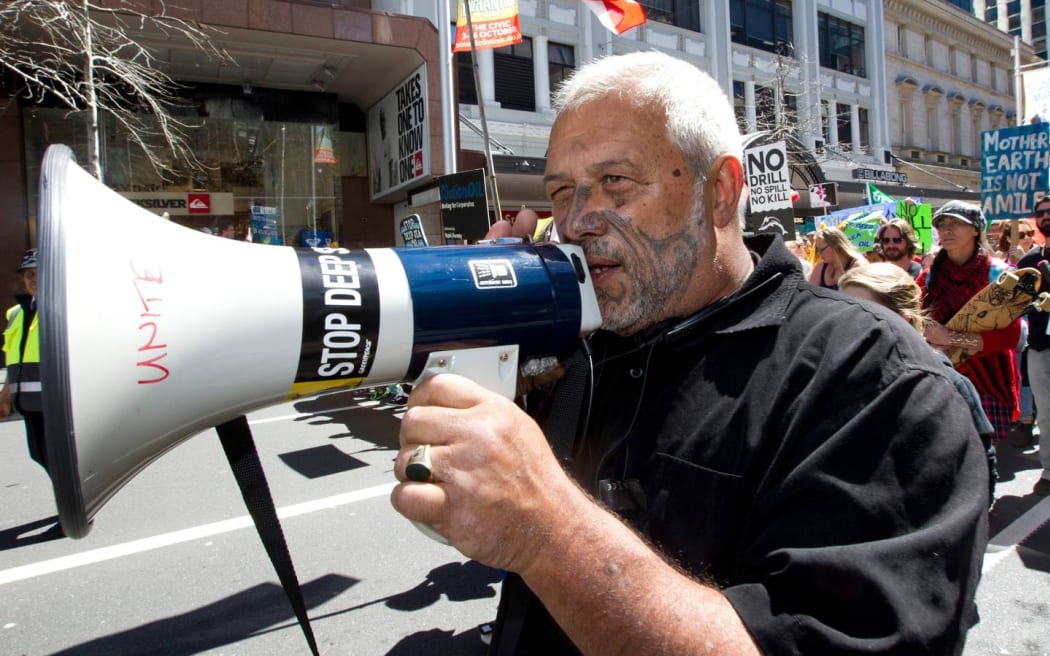
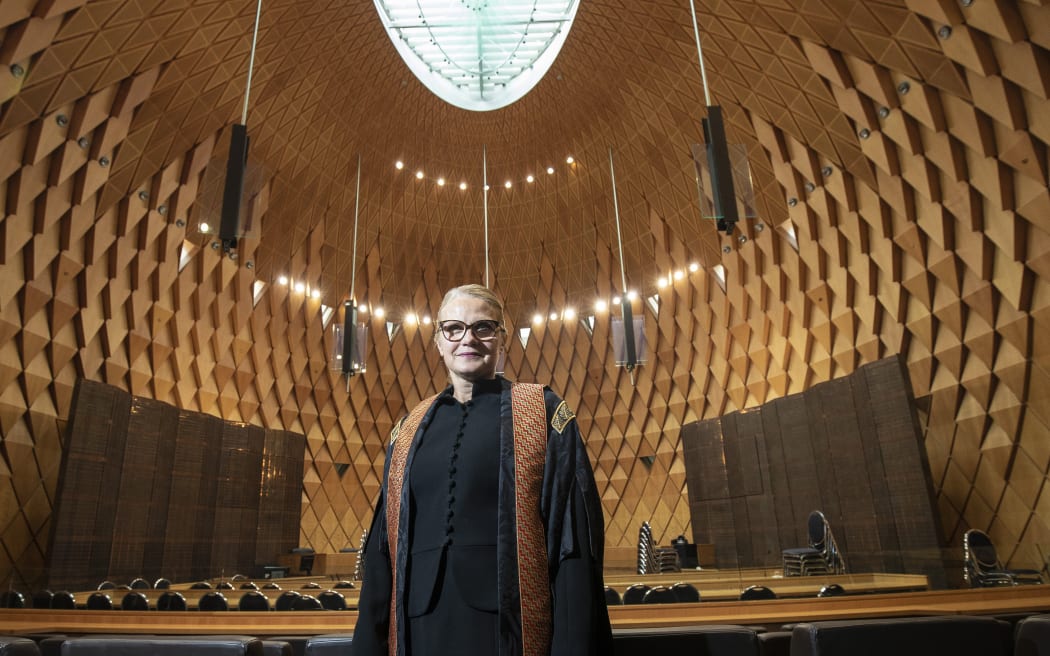



 [Image: Montgomery Sisam Architects]“We’re trying to run operations lean so that we can provide the most affordability, and the most units,” says Sean Botham, who leads development for CityHousing Hamilton, the affordable housing provider. Government funding, partly enabled by Canada’s goal to reach net zero emissions by 2050, is helping the city pay for more efficient buildings.
[Image: Montgomery Sisam Architects]“We’re trying to run operations lean so that we can provide the most affordability, and the most units,” says Sean Botham, who leads development for CityHousing Hamilton, the affordable housing provider. Government funding, partly enabled by Canada’s goal to reach net zero emissions by 2050, is helping the city pay for more efficient buildings.







